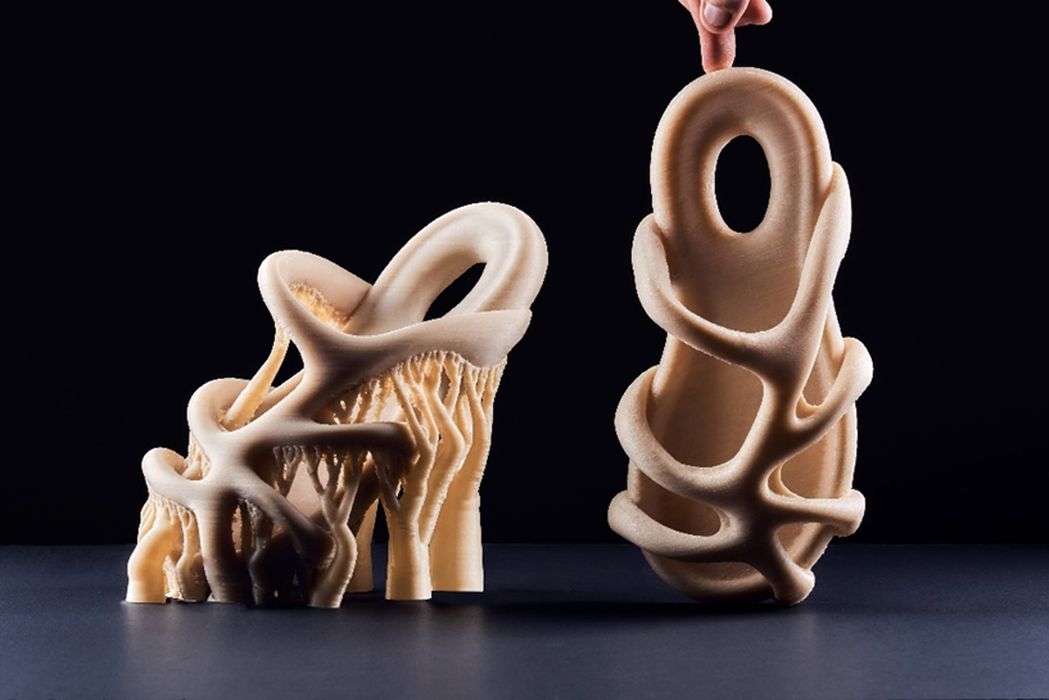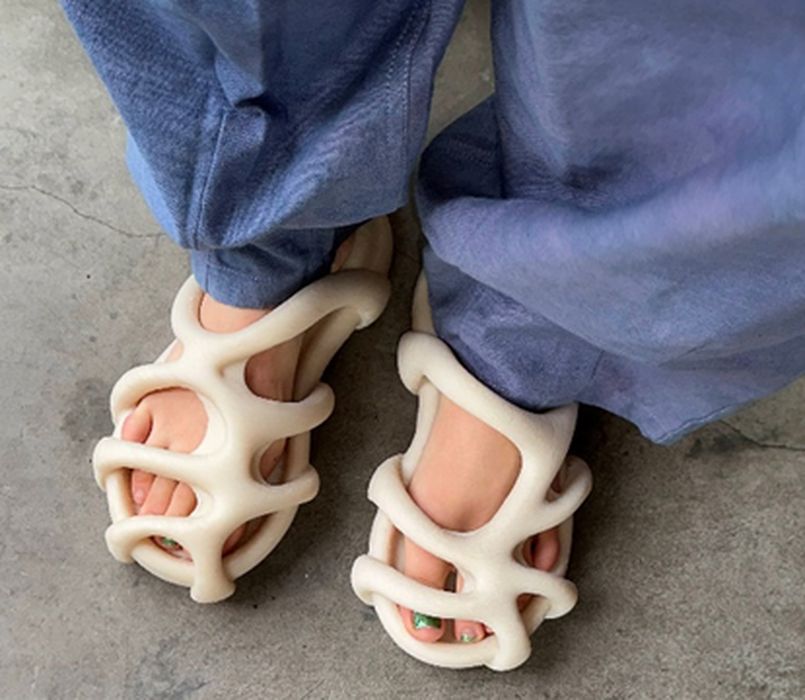
Charles R. Goulding and Preeti Sulibhavi look at a new 3D printed design that was inspired by nature.
At the intersection of fashion, technology, and environmental consciousness lies ROOTS: a 3D printed concept slide designed by Kitty Shukman and Balena. In collaboration with designer, Kitty Shukman, the concept of “ROOTS” combines artistic and technological vision to seamlessly integrate the branches and stems of the upper section of her slides into the outsole, mimicking the organic wrapping of roots beneath the foot.
She intentionally designed the left and right shoes to have distinct characteristics, enhancing the playful notion of roots growing organically over the feet. The 3D printed slides serve as an invitation to take a deep breath and find solace in the roots that ground us.

A UK-based shoe designer, Kitty Shukman’s work is considered ground-breaking and carries a signature aesthetic. She is forcing the fashion industry to think more about utilizing sustainable sources and methods to create shoes that empower the customer. Her work is considered genuine and carries a social depth and importance to it.

Through this unique footwear concept, Balena is determined to push the boundaries of 3D printing to advance the adoption of compostable, biodegradable and simultaneously durable materials in the fashion industry.
3D printing has the potential to revolutionize the materials landscape for fashion – one of the world’s most eco-un-friendly industries. Innovative designers like Kitty have begun to realize the promise of this transformative technology as well as the clear “End-of-Life” enabled through the pioneering of next-gen materials like BioCir™ in order to create new designs which are beautiful, fashionable, and circular from “root”-to-end.
“Partnering with Kitty to create a truly remarkable and circular product has underlined the magic that happens when you put the right material in the hands of the right designer,” said David Roubach, Founder and CEO of Balena.
The Research & Development Tax Credit
The now permanent Research and Development (R&D) Tax Credit is available for companies developing new or improved products, processes and/or software.
3D printing can help boost a company’s R&D Tax Credits. Wages for technical employees creating, testing and revising 3D printed prototypes can be included as a percentage of eligible time spent for the R&D Tax Credit. Similarly, when used as a method of improving a process, time spent integrating 3D printing hardware and software counts as an eligible activity. Lastly, when used for modeling and preproduction, the costs of filaments consumed during the development process may also be recovered.
Whether it is used for creating and testing prototypes or for final production, 3D printing is a great indicator that R&D Credit eligible activities are taking place. Companies implementing this technology at any point should consider taking advantage of R&D Tax Credits.
We have covered sports shoes and 3D printing for the most part. 3D printing has been used for creating sneakers and other sports accessories because of the light-weight, durable and flexible nature of 3D printed objects.
However, Balena’s state-of-the-art in-house lab translated Kitty’s “fashionable” design into a tangible reality, showcasing the immense potential of its BioCir™ material in 3D printing, as previously demonstrated in other major manufacturing processes like Injection Molding and extrusion, to help generate sustainable footwear.
Conclusion
Fashion, sustainability and technology don’t often find a common meeting ground. But Balena and Kitty Shukman have hit the sweet spot with ROOTs, 3D printed, eco-friendly, designer footwear. With help from 3D printing, this company is transforming the fashion industry – in the most eco-friendly ways.
